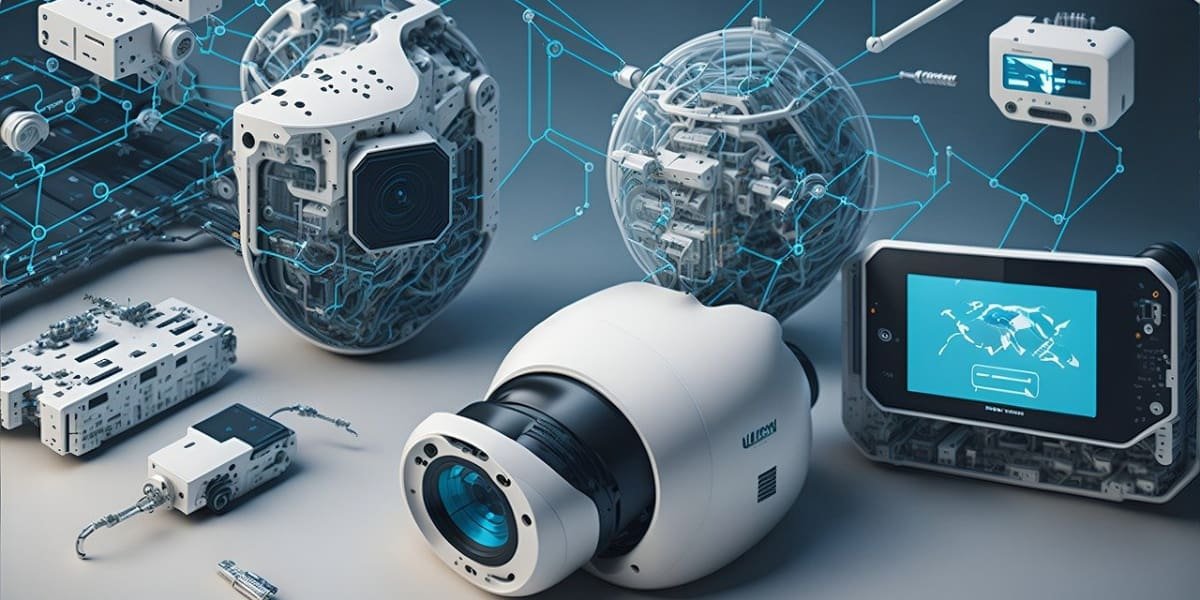1. Introduction to IoT Device Management
The Internet of Things (IoT) has revolutionized how we interact with technology, connecting devices and enabling smarter environments. However, managing these interconnected devices is critical to ensure smooth operation, security, and efficiency. This is where IoT Device Management Tools come into play.
These apps allow organizations to monitor, manage, and secure IoT devices remotely. In this article, we will explore the key features, benefits, and challenges of IoT device management apps, along with expert insights and future trends.
2. Key Features of IoT Device Management Apps
a) Device Onboarding and Configuration
Onboarding new devices and configuring them to operate within a network is the first step in IoT device management. The app streamlines this process, allowing for bulk onboarding and ensuring that each device is configured correctly from the start.
b) Device Monitoring and Diagnostics
Continuous monitoring is essential for maintaining the health of IoT devices. These apps provide real-time diagnostics, alerting administrators to any issues that arise, such as device malfunctions or connectivity problems.
c) Remote Device Control
IoT device management apps enable administrators to control devices remotely. This feature is particularly useful in large-scale deployments where manual intervention would be time-consuming and costly.
d) Security Management
Security is a significant concern in IoT networks. These apps offer robust security management features, including encryption, authentication, and access control, to protect devices from cyber threats.
e) Firmware Updates and Patching
Regular firmware updates and patches are crucial to keeping IoT devices secure and functional. IoT device management apps automate this process, ensuring that all devices are up-to-date with the latest software.
3. Benefits of Using IoT Device Management Apps
a) Enhanced Operational Efficiency
By automating device management tasks, these apps significantly enhance operational efficiency. Administrators can manage thousands of devices from a single interface, reducing the time and effort required to maintain the network.
b) Improved Security Posture
With integrated security features, IoT device management apps help improve the overall security posture of an organization. They provide tools to detect and mitigate potential threats, reducing the risk of data breaches.
c) Scalability and Flexibility
As organizations grow, their IoT networks must scale accordingly. IoT device management apps offer the scalability and flexibility needed to accommodate additional devices without compromising performance.
d) Cost Reduction
Automating management tasks and reducing the need for manual intervention leads to significant cost savings. Organizations can allocate resources more efficiently, lowering operational costs.
4. Popular IoT Device Management Platforms
a) AWS IoT Core
AWS IoT Core is a popular platform that provides secure and scalable management of IoT devices. It offers robust integration with other AWS services, making it a versatile choice for businesses.
b) Microsoft Azure IoT
Microsoft Azure IoT is another leading platform that offers comprehensive device management capabilities. It supports a wide range of IoT devices and provides advanced analytics and AI integration.
c) Google Cloud IoT
Google Cloud IoT offers a fully managed service that simplifies the management of IoT devices. It integrates seamlessly with Google Cloud’s suite of services, providing powerful tools for device monitoring and control.
d) IBM Watson IoT
IBM Watson IoT is known for its advanced analytics and AI capabilities. It offers a secure and scalable platform for managing IoT devices, making it a preferred choice for large enterprises.
5. Challenges in IoT Device Management
a) Security Concerns
Despite the security features offered by IoT device management apps, security remains a significant challenge. IoT devices are often targeted by cybercriminals, and ensuring their protection requires constant vigilance.
b) Device Compatibility Issues
IoT networks often consist of devices from different manufacturers, leading to compatibility issues. IoT device management apps must be versatile enough to handle various protocols and standards.
c) Scalability Challenges
As the number of connected devices increases, so does the complexity of managing them. Scalability is a challenge that requires advanced solutions to ensure smooth operation as the network expands.
6. Expert Insights on IoT Device Management
a) Importance of Security in IoT
Experts agree that security is the most critical aspect of IoT device management. Ensuring that devices are protected from cyber threats is paramount to maintaining the integrity of the entire network.
b) Case Study: Successful Implementation
A leading manufacturing company successfully implemented IoT device management Tools, resulting in improved operational efficiency and reduced downtime. By automating device monitoring and control, the company was able to focus on core business activities.
7. Future Trends in IoT Device Management
a) AI Integration
Artificial Intelligence (AI) is expected to play a significant role in the future of IoT device management. AI-powered apps will offer predictive maintenance, allowing organizations to address potential issues before they become problems.
b) Edge Computing
Edge computing will enable IoT devices to process data closer to the source, reducing latency and improving real-time decision-making. This trend is expected to enhance the efficiency and responsiveness of IoT networks.
c) Blockchain for IoT
Blockchain technology is emerging as a solution for enhancing security and transparency in IoT networks. It offers a decentralized approach to managing devices, reducing the risk of centralized points of failure.
Read More: How to Select the Best IT Support Services for Your Business Needs
8. Conclusion
IoT Device Management Tools are essential for ensuring the smooth operation, security, and scalability of IoT networks. As technology evolves, so will the tools and strategies used to manage these networks. By staying informed about the latest trends and best practices, organizations can harness the full potential of IoT.
9. FAQs on IoT Device Management
1. What is the best IoT device management app?
The best app depends on specific needs, but popular options include AWS IoT Core, Microsoft Azure IoT, and Google Cloud IoT.
2. How do IoT management apps improve security?
These apps offer features like encryption, authentication, and access control to protect devices from cyber threats.
3. Can IoT management apps handle scalability?
Yes, most IoT management apps are designed to scale, allowing organizations to manage thousands of devices efficiently.









